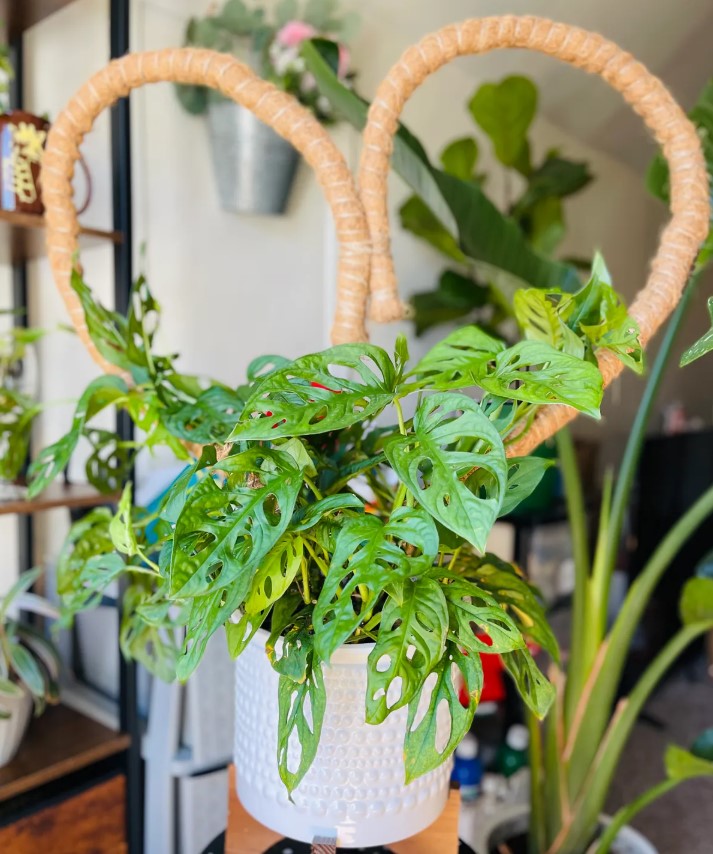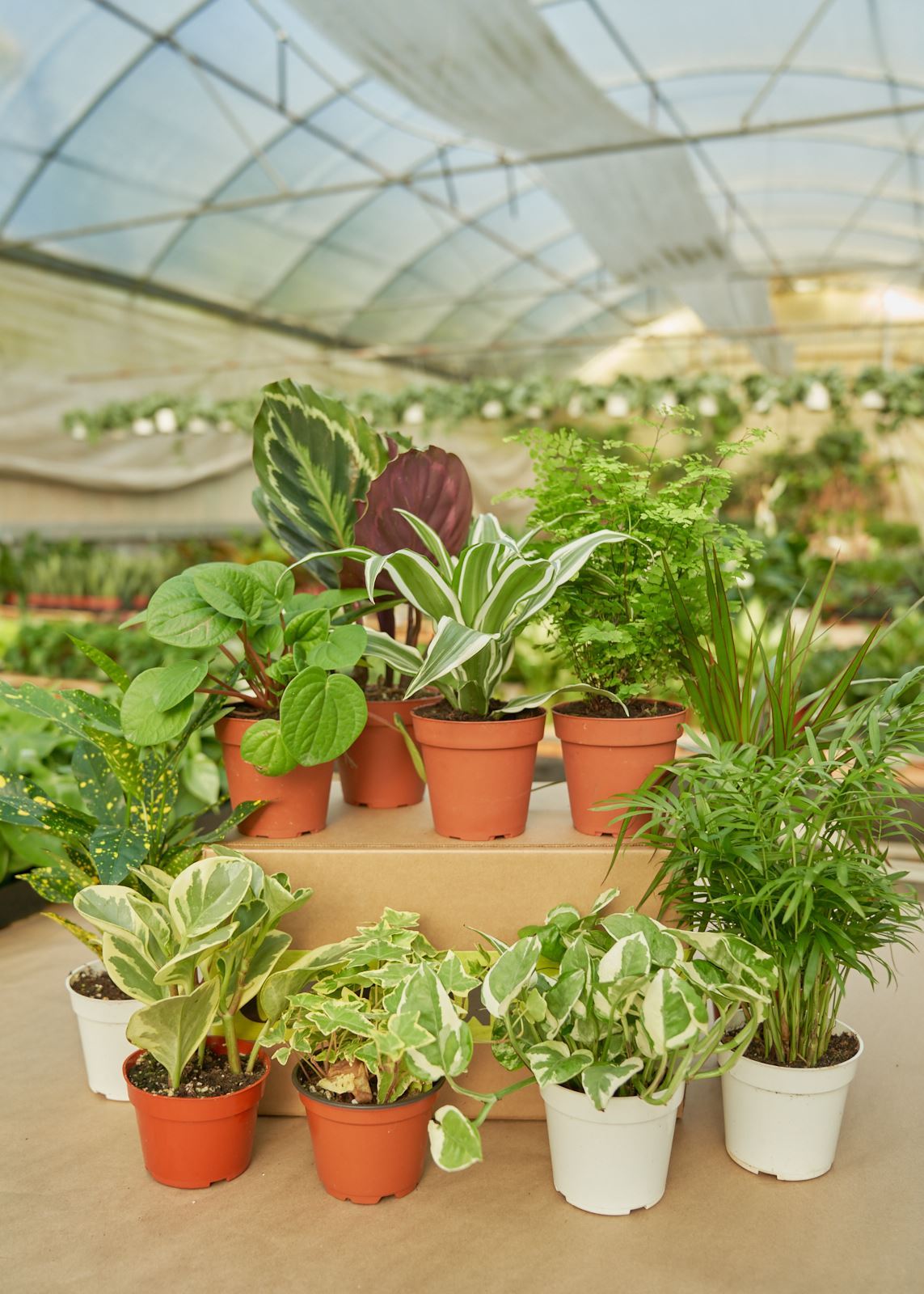How to Repot a Monstera: The Complete Guide

Repotting your Monstera at the right time is essential for the plant’s well-being. These tropical plants can grow 1 ft a year under optimal conditions, and thus, can quickly outgrow their existing pot if the planter wasn’t big enough in the first place. While Monsteras can tolerate their roots being crowded temporarily, leaving your green companion root-bound for too long can harm its growth rate and overall health. So, you need to repot Monstera from time to time, ideally every 2-3 years.
But how to repot a Monstera? And most importantly, what are the signs of your plant feeling unhappy in its current container?
This guide has answers to all your Monstera repotting questions and easy tips to prevent transplant shock. You’ll also learn when to repot Monstera, along with some useful post-replanting care tips. So, let’s get started.
About Monstera Plants

Monstera plants are vibrant tropical beauties with at least 50 known varieties. Plant enthusiasts love growing them for their unusual fenestrated leaves. These houseplants belong to the Araceae family and are native to Central and South America. These large and lush beauties use their aerial roots to climb trees and other plants.
Monstera plants are popular for their air-purifying qualities and the lush, tropical vibe they bring indoors. They are relatively easy to care for, thriving in bright, indirect light, with moderate watering, and in well-draining soil. They symbolize growth, abundance, and long life; however, you should stay cautious with this toxic plant if you’ve got pets at home. Some top-selling Monstera varieties include the Swiss Cheese Vine, the rare and stunning Monstera ‘Thai’ Constellation, and the Monstera Peru, which all make great statement plants.
How to Know When to Repot Monstera

How do I know when my Monstera needs repotting? Many plant parents are unsure about when to transplant their green babies into a new pot. The best approach is to wait for visible signs before repotting Monstera. Here are 7 clear signs to look for that will indicate you should not postpone repotting your Monstera anymore:
- Cracked container walls
- Roots growing near the soil line
- Slow or no growth
- Roots coming out through the drainage holes
- The soil dries quicker than usual
- Leaves are curling, drooping, or wilting
- Discolored leaves
How Often to Repot Monstera
So, when should you repot your Monstera? The best time to repot Monstera is every 2-3 years, in the spring or summer. Alternatively, your Monstera plant may require to be repotted earlier if the roots start curling inside the pot or force themselves out through the drainage holes due to restricted space.
Do Monstera Prefer to Be Root-bound?
No, a Monstera plant doesn’t prefer to be root-bound. While it’s true that the plant can tolerate being snug in a pot for a short period, it’s actually not good for its health and growth in the long run. Hence, you should repot the Monstera plant when the roots start to outgrow the pot.
Do Monsteras like small or large pots? Monstera flourish in a pot that has enough space for the roots to spread freely, so not too small or too large.
Repotting Monstera: What Tools Do You Need?
You'll need the following tools and materials for repotting Monstera:
- New pot (plastic or ceramic, 2-3” bigger, and good drainage)
- Fresh houseplant mix or pre-made Monstera soil mix
- Gardening gloves
- Sharp, sterilized scissors or pruners
- Canvas tarp or newspaper
- Watering can
- Spray bottle (for misting leaves)
- Fertilizer (optional)
What Soil Should You Use to Repot a Monstera?
What kind of soil is best for Monstera? The best soil for Monstera is a well-draining mix (lightly sandy, medium loamy, and acidic to neutral pH) that can hold some moisture but doesn’t stay soggy for too long, which can cause root rot. A blend of regular potting soil and peat moss, with added shredded bark and perlite, works well.
How to Repot Monstera Easily

What is the best way to repot Monstera? You can quickly repot a Monstera by following these steps:
- Prepare the new plastic or ceramic container by layering it with fresh Monstera soil mix.
- Spread the canvas tarp (or newspaper) on the floor to avoid creating a mess while repotting Monstera.
- Put on your gardening gloves. While firmly holding the old pot with one hand, use your other hand to gently grip the base of your Monstera’s stem and carefully lift it out of the pot. If your plant is too tall, you may need someone to help you out.
- Massage the root ball to loosen the roots and remove the old soil. Check the roots for damage. If you find any mushy, black roots with a bad odor, cut them using clean, sharp pruners.
- Plant your Monstera in the new pot, and fill up the space around the plant with the remaining soil mix. Leave about a 1-inch space near the rim, though.
- Finally, water your Monstera until you see the water running out of the drainage holes
Once you’re done, place your Monstera in its usual location to minimize the risk of transplant shock.
Repotting Monstera: Common Problems

Do Monsteras go into shock after repotting? Sometimes, yes, especially if you disturb their roots too much. While a little drooping is normal, the right care can help your plant recover quickly and continue growing strong.
Are Monstera Sensitive to Repotting?
Yes, Monstera plants can be sensitive to repotting. They may show stress through changes in their leaves, but with the right care, these gorgeous floor plants usually recover. Below, we share the most common signs of transplant shock and their fixes:
- Monstera leaves curling after repotting: This is often caused by temporary root stress or underwatering. Keep the soil slightly moist, and place the plant in bright, indirect light to fix the issue.
- Monstera leaves turning yellow after repotting: If your Monstera leaves are turning yellow after repotting, overwatering could be the reason. Let the soil dry slightly between waterings and trim the yellow leaves if required.
- Monstera leaves drooping after repotting: If Monstera leaves are wilting after repotting, it’s best to keep the soil evenly moist, protect the plant from harsh direct sunlight, and give it time to recover.
- Monstera leaves turning brown after repotting: This is usually caused by low humidity. Mist the leaves or use a humidifier to prevent further browning.
How Long Does It Take a Monstera to Recover From Repotting?
A Monstera usually takes 2-4 weeks to recover from repotting. During this time, keep it in bright, indirect light and water only when the topsoil is dry. And if you’re wondering how to save a Monstera after repotting? Gentle care and patience are key.
How to Repot Monstera: FAQs
Q: Do Monsteras get transplant shock?
A: Yes, a Monstera can get transplant shock if the roots are disturbed or damaged. After repotting Monstera, it’s normal for it to droop or grow slowly for a couple of weeks. You don’t need to worry; keep the plant in bright, indirect light, avoid over- or underwatering, and maintain stable conditions to help it start thriving again in the new pot.
Q: Do you bury aerial roots when repotting Monstera?
A: It’s completely fine to bury some aerial roots when repotting Monstera, but it’s generally not required. Aerial roots help Monstera climb and absorb moisture from the air. If they reach the soil, they may grow into normal roots. Just make sure not to force or damage the aerial roots; simply tuck them gently into the pot if space allows.
Q: Do Monsteras like deep pots or wide pots?
A: Monstera prefer slightly wider plant containers. Since their roots tend to grow outwards and horizontally, a wide pot offers the plant more stability and room to spread as it grows.
Q: Do Monsteras like to be crowded?
A: No, Monstera plants don’t like to be crowded. If roots start circling the pot or showing from the drainage holes, it’s the best time to repot your Monstera plant. However, some indoor gardeners have observed that a slightly snug pot helps them stay upright and focus their energy on prolific new leaf growth.
Q: Can I use succulent soil for Monstera?
A: Succulent soil may drain too quickly. Monstera plants thrive in a well-aerated but moisture-retentive potting mix. Instead, we suggest mixing succulent soil with peat moss and perlite to create a balanced blend.
Q: When should I add a moss pole to my Monstera?
A: You should support your Monstera with a moss pole when it starts producing larger leaves and aerial roots, which is typically when it’s about 2-3 ft. tall. A moss pole encourages upward growth and bigger leaves, so installing it early makes training easier and prevents disturbing the roots too much later on.
Q: How to replant a Monstera with a moss pole?
A: When repotting Monstera with a moss pole, place the moss pole in the new pot after filling it with ⅓ of the soil first, so it’s anchored firmly. Then, position the Monstera next to it by gently guiding aerial roots toward the pole. Fill in soil around both, water well, and loosely tie stems to the pole for support.
Conclusion
Repotting a Monstera is a simple but important task if you want to keep your tropical beauty healthy and thriving. From using the right pot and well-draining soil to handling the roots with care, you will provide your plant with sufficient room to grow and flourish. With regular care after repotting, your Monstera will surprise you with bigger, more beautiful leaves, adding fresh, tropical charm to your home for years to come.
Grow Monstera plants with Philodendrons, Ficus, and Pothos plants to create a lush indoor garden!
